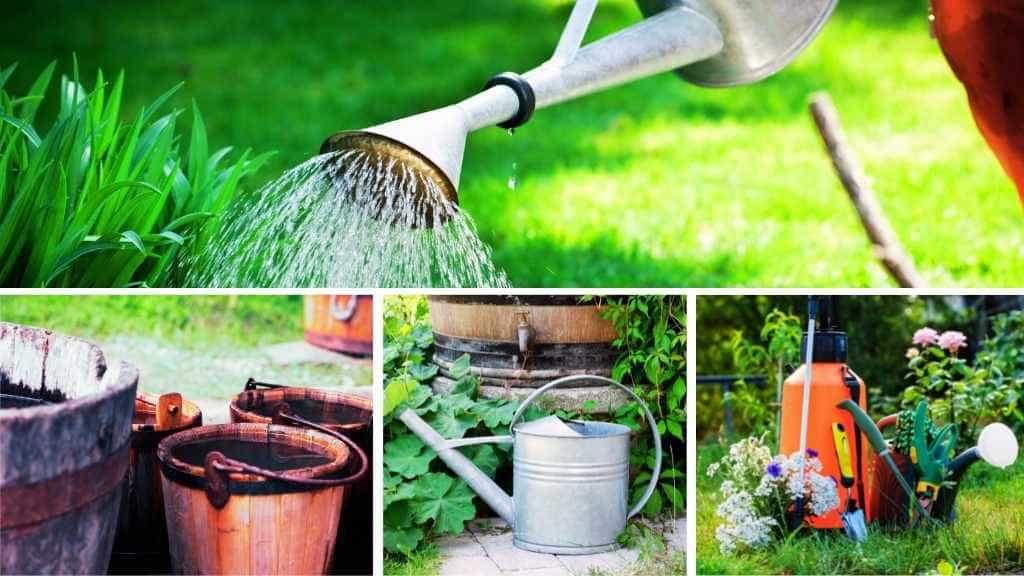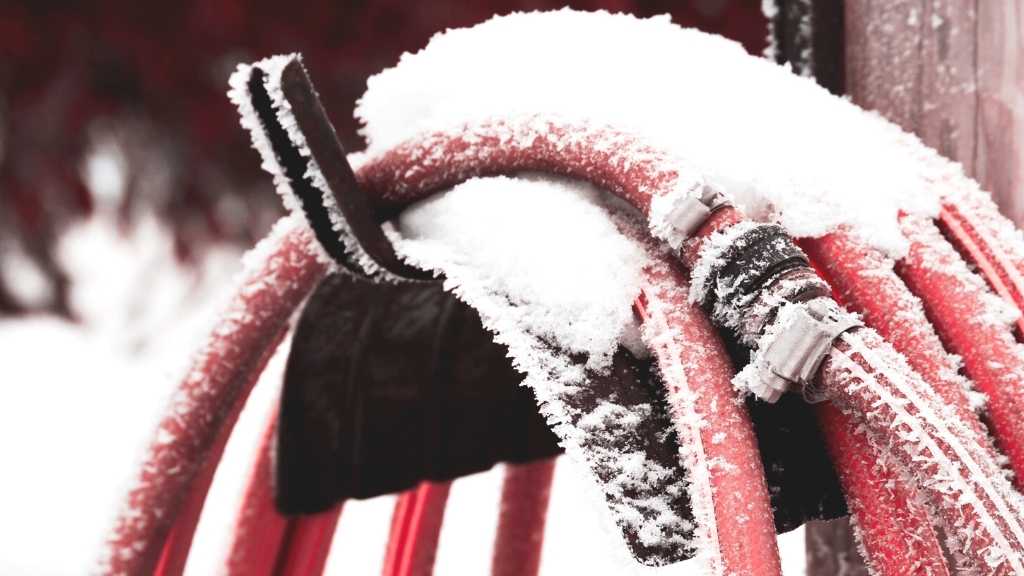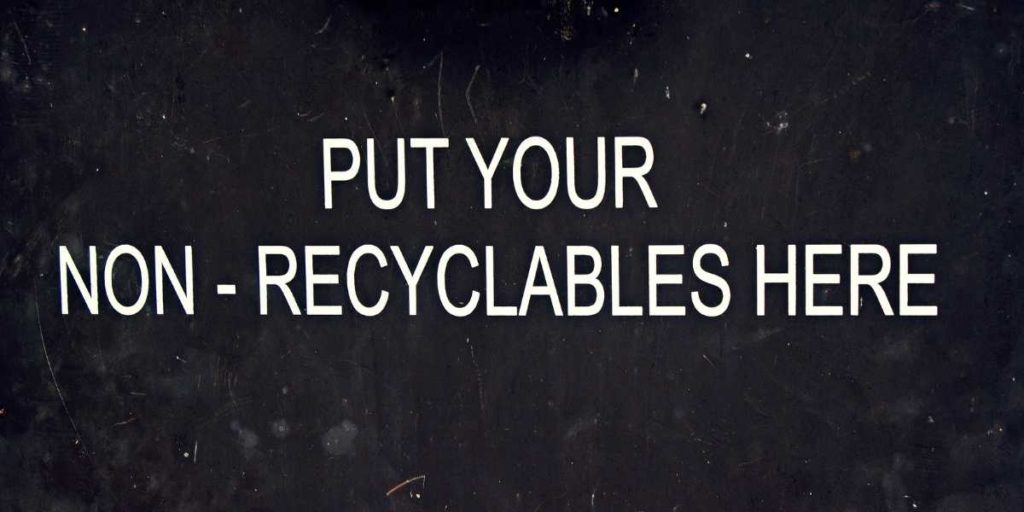There are different ways to water plants without a hose, either by using a watering can, a backpack automatic sprayer, or water buckets.
We talk a lot about garden water hoses, fittings, and hose storage options, trying to answer the most diverse questions that may arise related to the garden watering topic. We faced a lot of challenges ourselves while getting acquainted with most of the activities related to keeping a garden.
In this post, we will talk about the situation where you are just starting a vegetable garden, or where you recently moved to your new house and you don’t yet have any garden hoses available. What can you do in this situation in terms of watering your plants and garden, in general?
How to water a garden without a hose?
There are other alternatives to choose from in order to water a garden without a hose:
- Use a watering can
- Use a large water bucket and a water cup
- Build a self-watering system from unused, old bottles
- Use a battery-powered cart sprayer
- Use water tanks and an outdoor utility cart to transport them where needed
Going further, we provide more details on this topic, based on our own experience and previous research. Therefore, make sure you continue reading as this will save you a lot of time!
Watering cans are the most common alternative to watering a small garden without a hose. It is indicated to have two watering cans, as while you are watering the plants with one, the other has time to get filled with water. This saves you some time and speeds up the watering process.
Water buckets are as well a quick, affordable option. Like in the previous example, you can use the same technique. Buy at least two and use them both as explained above. Also, use a water cup as a measuring unit and distribute water equally to the plants.
To water a garden by hand, take a larger water cup, sink it into the water-filled bucket and pour the water, as close as possible to the plant stem. This way the water will soak into the plant roots, where it is most needed. Repeat the process as often as necessary, considering the soil dryness and the plant watering needs.
One problem with the above options is that carrying watering cans and water buckets around the garden can become very challenging for the physique, especially after some rounds of moving back and forth from the water spigot to a specific garden space.
In such cases, probably a better option would be using one of the below options.
Building a self-watering system
Building a self-watering system is, in our opinion, an easy trick you can use to water a small garden or even the plant pots from your balcony. Moreover when you are out on vacation or business trips. First, depending on the number of plant pots you have, or the square feet of your garden, you will need a different number of unused bottles.
You can use either plastic bottles or unused glass bottles, such as empty wine or beer bottles.
Use Glass Bottles
If you choose to use glass bottles, below you can find the process described step by step.
- Grab the glass bottle and remove the lid
- Fill the bottle with water until it is almost full
- Dig a small diameter hole in the garden or plant pot soil near the plants while keeping a safe distance from the plant roots.
- Place the bottle with the top down in the soil and place the bottleneck in the hole you dug in step 3.
- Make sure the water bottle will not fall out from the hole and that it will not incline to one side or another by securing its standing position.
The water will drip gradually into the soil if you use this method. Studies have shown that one bottle of water, used as described above, can ensure the watering needs of around a 3 square foot area for about 3 – 4 days.
Use Plastic Bottles
In a similar way, if you choose to use a plastic bottle, you will need to dig a larger diameter hole in the soil, near the pants that must be watered. You can use plastic bottles that are up to 2 liters in volume.
Cut 90% of the bottle base, using a cutter. Make sure the resulted base cap is still attached to the bottle. You should be able to lift it and lay it back on the bottle as a cover.
- Remove the bottle lid and place 1/2 of the bottle into the hole you dug previously.
- Stabilize the bottle using the soil you previously dug, for the bottle to stay still in a vertical position.
- Lift the bottom cover of the bottle and fill the bottle with water.
- Lay down the cover to prevent water from evaporating.
This way the water will drip gradually into the soil. You can refill the bottle whenever needed, depending on the soil dryness and the plant watering needs.
Using a battery-powered cart sprayer
Using a battery-powered cart sprayer is one of the best workarounds when you have no garden hose available. This type of device can be used for watering plants with just water, or you can also mix different nutrients or other plant chemical treatments in the cart sprayer tank.
There are several tank capacity options that you can choose from, depending on the size of your garden or the space that needs regular watering. You can find sprayers designed to be used as a backpack, usually, they have a smaller water tank capacity between 2.8 gallons and up to 5 gallons.
Heavy-duty models are available as well. We recommend the models mounted on a cart with heavy-duty wheels, for easier portability. The water tank volume for this type of model is considerably higher, up to 13 gallons.
Both variants of water sprayers will come with a set of accessories that you need for proper use. Among the most important are: a small length hose that connects to the water tank, a wand, one or more types of sprayer heads, and, of course, the battery charger.
Depending on the length, the hose included in the sprayer cart system can be mounted on a hose reel built into the cart system. You can fill in the water tank from your outdoor spigot and then guide the cart sprayer to the desired location to easily start watering the garden.
Is using a water tank a good choice?
Use a water tank and an outdoor utility cart to carry it into the garden or near the lawn that needs watering.
These types of water tanks have usually a gallon measurement scale and a spigot preinstalled. Fill the tank with water and transport it to the perfect spot in your garden. Then turn on the spigot and fill in a watering can to start watering the plants.
You can also use a bucket and a water cup, or a larger recipient transport the water from the tank to the area of the garden that you need to water.
Conclusions
In case you need to water your plants and you don’t have a garden hose to do this with, there are quite a few handy alternatives that you can immediately turn to. In this post, we covered all of the workarounds we could think of, that we used in the past, and still use from time to time.
Yes, the functionalities of a water hose are difficult to replace but you can manage to water your garden in different ways when needed. Take your time to go through each of the alternatives we presented in this post, and then choose the one that best suits your situation.



